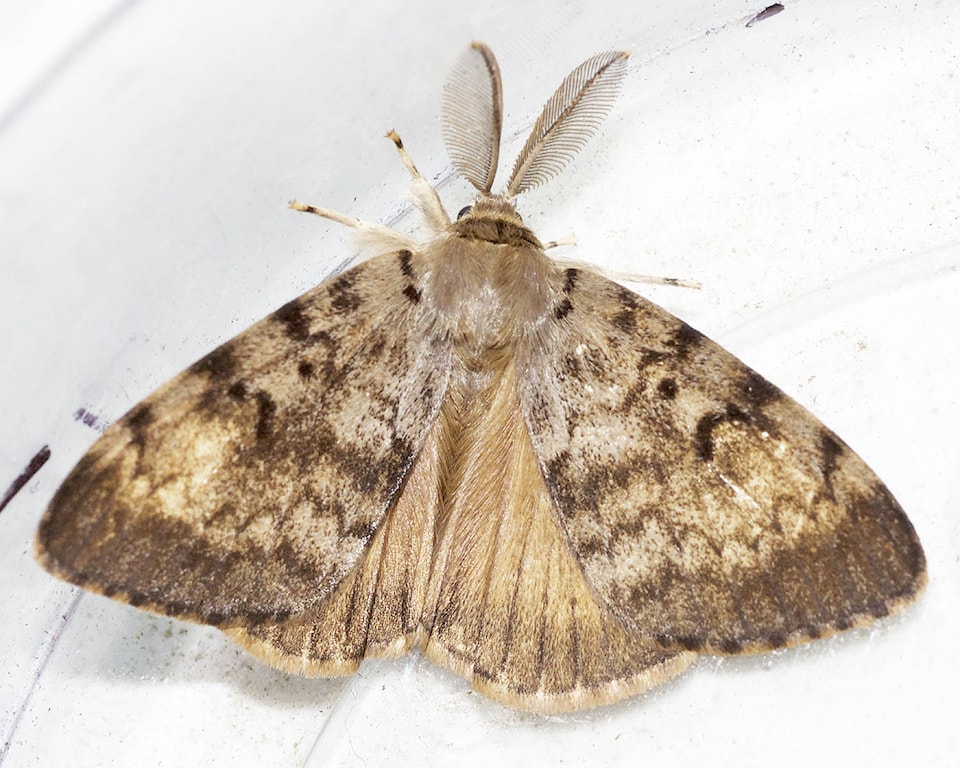The city has received its answer from the provincial government on how residents will be informed about some insecticide use scheduled for this spring, but a group of concerned residents is mounting an opposition to the plan.
Council was informed at their Jan. 22 meeting that the province will be spraying the neighbourhood around the intersection of Rockland Road and S. Alder Street for gypsy moths this spring. Coun. Charlie Cornfield, in particular, was concerned about how public engagement would happen before the spraying began and city staff sent a letter requesting that information from the province.
In his reply, forest health officer Tim Ebata says there will be an open house scheduled for early April – though the date and venue has not yet been set – and affected residents should be expecting “postcards” inviting them to attend.
Door-to-door pamphleting is also planned for the day before treatment begins, Ebata says, as well as immediately before spraying begins on the day, “to allow pets to be brought indoors and also cover items not wanting to be treated.”
But the Campbell River Environmental Committee (CREC), along with some residents in the area slated for spraying, say consulting doesn’t matter if what’s being discussed is unnecessary and dangerous. They are calling for the city to step up and say no to the province on this and met with the city’s environmental expert Terri Martin, along with sustainability and long term planning manager Amber Zirnhelt, in the lobby of City Hall after Monday’s public meeting of council.
“This has to be taken very seriously,” says CREC president Leona Adams. “We’re asking for the city to stand up and tell the ministry that this isn’t appropriate for their city and their citizens.”
Campbell River filmmaker, journalist and environmental advocate Damien Gillis lives in the area to be sprayed, and he says unless he’s shown absolute proof there’s no danger, “I’ll do everything in my power to keep these people off my property.”
The government’s own fact sheet on Btk spraying, Gillis says, contradicts itself.
“They say it has ‘no known toxic effects on humans, other mammals, plants, birds, fish honeybees or other beneficial insects,’ but then they say some people should remain inside to reduce their risk of exposure,” Gillis says. “Well, it’s either a risk or it’s not. To say that you should reduce your exposure tells me there’s a risk there, and then to categorically say there are no toxins – well, if that were true, there would be no need for the warning about staying inside.”
Zirnhelt encouraged the group to come forward as a delegation to council “sooner rather than later,” so they can present their arguments so that the city can consider it.
That documentation, CREC says, includes studies and reports that have linked the spraying of Btk to cases of legionnaires disease, which is contracted from the inhalation of bacteria – and even miscarriage. It also debunks the effectiveness of Btk on the moths themselves, according to CREC representative Catherine Holmes.
“To me, if there’s a risk where the consequences are severe – I mean we’re talking about Legionnaires disease and miscarriage – even if it’s just a correlation or suspicion of it, one has to be abundantly cautious with these things,” Gillis says. “There’s no need to take this risk.”
Martin asked for all of their documentation so she can review it, calling the group’s assertions “very concerning,” and Adams says they will definitely take Zirnhelt’s advice and prepare a presentation for council, which could take place as early as their next public meeting, scheduled for Feb. 19.
The group will also be circulating the neighbourhoods in question with their information and a petition to present to the city at that meeting.
